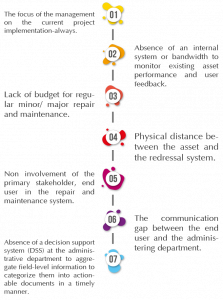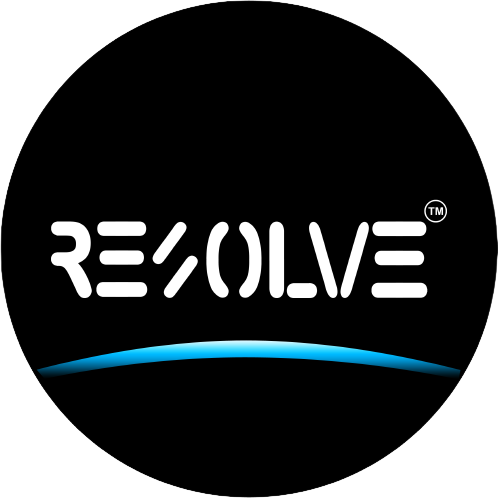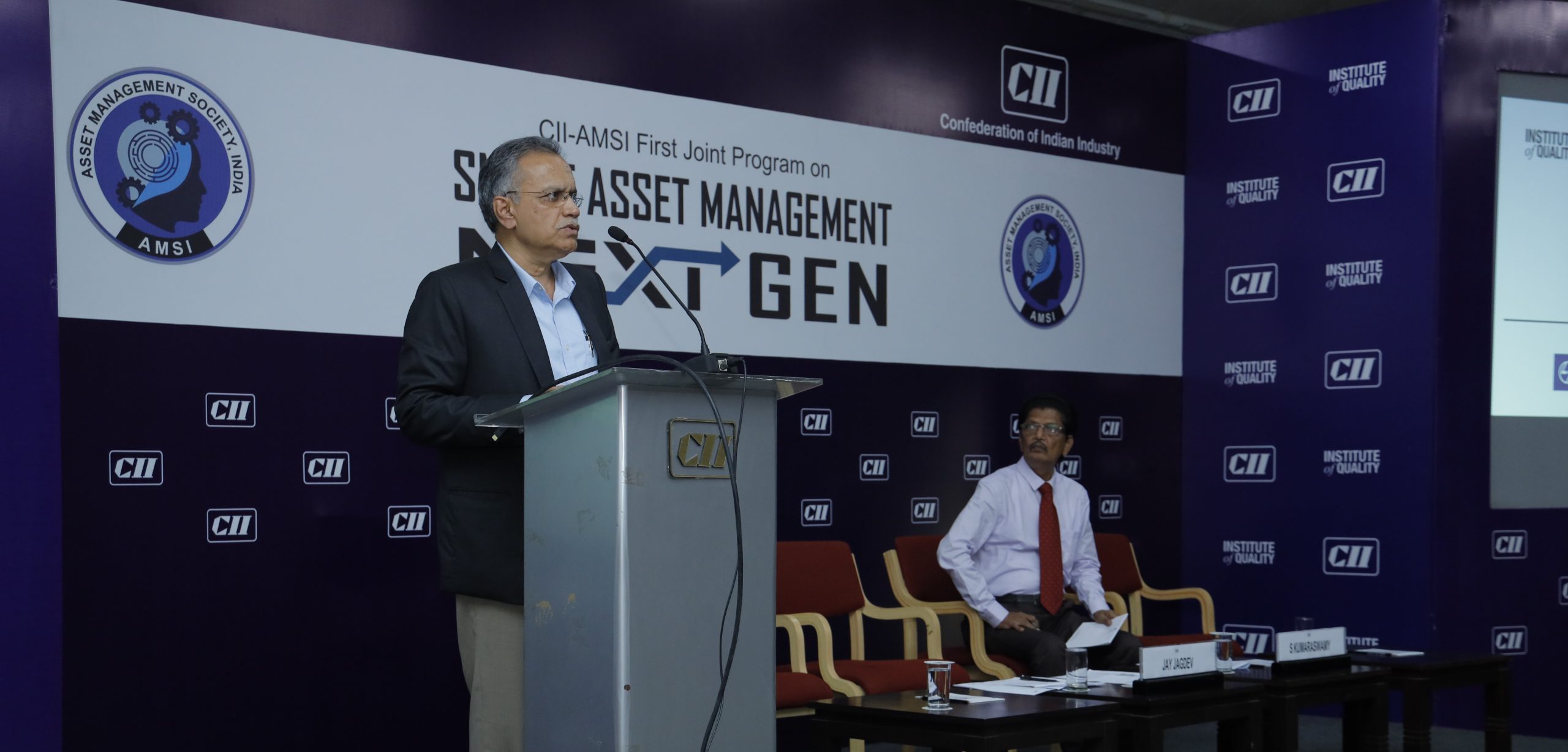Mr. JP Jagdev, MD, Everplanet Solutions (P) Ltd. was invited as a guest speaker at CII-AMSI Conference on Smart Asset Management to specifically talk about Optimizing Rural/ Public Assets to achieve SDG and ESG goals. The following is the excerpt of his talk.
Introduction
One of the most common questions any administering department of any government dealing with Public Assets face is, “How long do you think these assets would last?”. Most dread this question as there is no definite answer at hand.
There was a time the assets like drinking water systems, schools, colleges, and hospitals were all managed by the government. Citizens had no option but to accept them as they were and how they served.
Migration, exposure to other country’s service standards through electronic media, and Privatization of utilities progressively exposed the citizens to goods and services of higher standards, and the public service and assets got constantly benchmarked against them.
There was a time most of the poor infrastructure and services were attributed to a lack of financial resources – not anymore. The voice of dissatisfaction is not only limited to private discussions, but they are also all-over social media. So, the public sector must go beyond symbolism and address the core issues soon.
Coincidentally the global mandate of Climate action has come in also as an added responsibility. The mandate before the organization now is not only to achieve its organizational goals but also to be environmentally and socially compliant. But the challenge now is how they regulate their business actions over these public assets to ensure all three goals (ESG) are achieved.
Can it be done with the traditional methods when the number of public assets has grown exponentially so also the expectations of the new age user over the years?
Some love to answer this question because it’s something they have been able to sort out. In their experience in some cases, the answers and solutions are more helpful than the expectations of the organizations.
Help is now at hand. Using select management theories and available Information and Communication Technology, solutions have been successfully deployed by organizations to achieve their goals under ESG.
The Stones in their Shoes
Government or any large organizations under its various welfare schemes create thousands of assets and establishments for public convenience. They are drinking water systems, small office buildings, schools, and day-care centres. Public Asset helps companies and governments build better products and services that help keep their customers happy and engaged.
But observations on the ground show that poor construction quality, misuse, poor maintenance, and erratic repair not only leave these assets in question defunct for more time than serve their purpose.
Everyone wants the assets in top working order but is clueless about how to do it. Contracting the responsibility is already a failed strategy when you don’t own the responsibility of monitoring their services. The management of the organization treats this as their non-core activity and doesn’t provide enough empowered managers to deal with this challenge.
So, for any organization dealing with huge real estate, housing thousands of assets at multiple locations is a serious liability and a major distraction from their core activities.
Panchayats, Universities, big offices, hospital chains, municipalities, and industrial townships are silently suffering this and have accepted poor asset-related service as a fait accompli.
The early death of Asset and its impact on ESG
The impact of the early death of a public asset is first felt at the level of the end user for whose benefit or welfare the asset was built. That lowers the achieved by the organization and makes it inefficient.
The damaged asset adds to the waste and as a new set of asset gets built on the earlier one that prematurely adds a load of the organization on the natural resources.
Rural Public Asset Optimization
An optimized rural asset can be measured in terms of its uptime and lifespan. To reach a scenario where the assets are highly optimized, the organization has to regulate its business actions to ensure that its properly used, regularly maintained and timely repaired during its lifetime.
The Science of Asset Optimization
The science of optimizing assets has been tested and perfected at commercial organizations and factories where the business goals are well defined, and people and processes are under the direct control of the management and are regularly monitored. Implementing best practices in terms of proper use, regular maintenance, and repair is easy.
Because the organization is aware of how managing assets add to the organization’s financial bottom line, high priority is attached to optimize the plant and machinery.
But the scene changes when it comes to public assets.
All the stakeholders starting from the implementing organization, the EPC contractors, the maintenance department, and the users are strung together in a loosely structured or at times a vague contract where the duties and responsibilities are blurred.
This loosely coupled system and consciously keeping the primary stakeholder out of the decision-making process terming him as a nuisance, weakens the ecosystem further and that weakened ecosystem fosters inefficiency, corruption, and leads to wastage of public money. With no one owning it, the public assets fall prey to vandalism and fast forwards to death.
Asset Life Extension and Circularity
Circular Economy paradigms expects us to alter the way we consume and lead our lifestyle; it looks at each stage of value creation from raw material use to the process of value creation to delivery and explores opportunities where the leakages or wastes can be reduced by adopting various strategies.
The innovative strategies broadly fall under 4 categories called Cycling, Extending, Intensifying, and Dematerializing.
Of the four, organizations that are saddled with huge assets and finding it difficult to make the best use of them, the Extension strategy is the lowest hanging fruit which can help them improve their sustainability scores immediately.
One of the silent and major outcomes of the public asset optimization initiative is asset life extension and that simultaneously ticks the boxes of ESG.
Causality:

Tools for Public Asset Management
Because all these projects are so different from one another— and the arrangements between the stakeholders are unique-there can’t be a standardized methodology and approach like one shoe fits all formula. When it comes to method and approach, you can never be sure what will work until you try it out.
But here’s what we do know: that the role of the stakeholders is paramount in ensuring that the assets serve not only for the economic life but gets extended because of proper use, timely maintenance, and prompt repair. Now the matrix is getting bigger and more complex. How to ensure the dozens of tasks on thousands of assets are managed as per the set organizational standards.
This requires a smart tool for the management where the tasks are configurable and monitored. The roles and duties of human resources are evaluated, and implementation plans, and policies are courses corrected. A smart tool that extends the life of public assets helps organizations and companies achieve circularity—that is, building sustainable businesses with lasting impact over time rather than dying out after an initial burst of attention or revenue growth…or both!
Personal Experience and Examples
In the year 2016, we were given the mandate to find a solution to the problem of user dissatisfaction resulting from nonworking renewable energy assets which were established in the backward and inaccessible regions across the vast geography of the state of Odisha.
They were close to 1,00,000. We looked at all the stakeholders, mapped their rights and responsibilities, and established a digital platform where not only communication between the stakeholders take place, but their performance in complying to repair and maintenance standards was tracked. Today out of 52,000 assets that are under the active responsibility of the organization 97.50% of the assets are in working status.
The experience gained from the project made us customize the solution now for Homes, Offices, Hospitals, Civic Bodies, and Panchayats.
Today the rural assets of entities like Villages, Panchayats, Offices, Hospitals, universities, Schools and Hotels, Offices, and Beaches are maintained on this platform, and because of greater control over these assets and improved social ownership, the organizations have shown marked improvement in ESG scores. The next step is to build a governance model that will support the growth of sustainable businesses, as well as make sure that all stakeholders are benefited.
Conclusion
Our experience of the last eight years has made us realise that managing micro and distributed rural assets across a vast geography is not difficult. Three fundamental factors constitute the bedrock of the new governance model; and in the absence of one the model will not work.
- Honest Intent of the Government or the Public Asset Owning Organization towards Asset Optimization,
- Openness to include the end user in the decision-making process, and
- Making available of a smart tool to create a platform on which the stakeholders engage with each other for asset management and their performance is monitored.
This will ensure these businesses operate within their communities and continue to serve them long into the future.







